
"Caribbean Blue" is a song by Irish musician Enya, included as the second track on her third studio album, Shepherd Moons (1991). It follows a waltz time signature, and mentions the Anemoi : Boreas, Afer Ventus (Africus), Eurus, and Zephyrus. The song was released as a single on 7 October 1991.
"From a Distance" is a song by American singer-songwriter Julie Gold, initially penned in 1985. Gold's friend Christine Lavin introduced the song to Nanci Griffith, who first recorded it for her 1987 album Lone Star State of Mind. A successful cover version by Bette Midler was released in 1990.

"This House" is a song by American singer–songwriter Tracie Spencer. This song was the second single released from Spencer's second album, Make the Difference (1990). Issued via the Capitol Records label, the single was released on November 7, 1990.
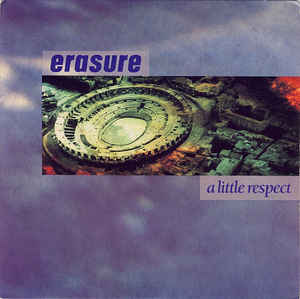
"A Little Respect" is a song written and recorded by English synth-pop duo Erasure, released in September 1988. It was written by Vince Clarke and Andy Bell. The lyrics are a plea to a lover to show compassion and respect. The heavily synthesized instrumentation is accentuated by acoustic guitar and Bell's vocal falsetto in the chorus. It was their tenth single and was taken from their third studio album, The Innocents (1988). Known as one of their signature songs, the single reached number four on the UK Singles Chart and was Erasure's second consecutive top-20 hit on the US Billboard Hot 100, where it made number 14, and reached number two on the US Hot Dance Club Songs chart.

"Chorus" is a song by English synth-pop duo Erasure, released in June 1991 as the first single from their fifth studio album of the same name (1991). Produced by Martyn Phillips and written by Erasure members Vince Clarke and Andy Bell, the song features Clarke's electronic soundscapes and Phillips' computerised production. The single was released by Mute Records in the UK and Sire Records in the US. It peaked at number three in both Denmark and the UK, while reaching number four in Ireland. In the US, it peaked at number 83 on the Billboard Hot 100 and number four on the Billboard Modern Rock Tracks chart.

"Love to Hate You" is a song by English synth-pop duo Erasure, released in September 1991 as the second single from their fifth studio album, Chorus (1991). Written by band members Vince Clarke and Andy Bell, it is an electronic dance track inspired by disco music. The synthesizer melody in the chorus is an interpolation of the string break from American singer Gloria Gaynor's disco-era classic "I Will Survive". The duo also recorded a Spanish version of the song, called "Amor y Odio", and one in Italian called "Amo Odiarti". The single was released by Mute Records in the UK and Sire Records in the US. It peaked at number four on the UK Singles Chart and became a top-10 hit in Austria, Denmark, Finland, Greece, Ireland, and Sweden.

"Rush Rush" is a song by American recording artist Paula Abdul, taken from her second studio album, Spellbound (1991). It was released on April 24, 1991, by Virgin Records as the lead single from the album. Written by Peter Lord and produced by Peter Lord and V. Jeffrey Smith, the song achieved success in the United States, where it topped the Billboard Hot 100, and became a worldwide hit.

"How Can We Be Lovers" is a song written by Michael Bolton, Diane Warren, and Desmond Child and performed by Bolton. Released as the third single from Bolton's sixth studio album, Soul Provider (1989), it peaked at number three on the US Billboard Hot 100 and number 10 on the UK Singles Chart in May 1990. The song also reached number two in Canada, number three in Australia, number 10 in Sweden, and number 18 in Ireland.

"Are You Ready" is a song by Australian rock band AC/DC. It is featured on the band's 1990 album The Razors Edge. A live version of the song recorded on the tour of the same name appeared on one of AC/DC's two live albums of 1992, Live: 2 CD Collector's Edition. The song peaked at number one in New Zealand, becoming the band's only number-one hit there, and has been certified gold for sales exceeding 5,000. The song also peaked at number 16 on the US Billboard Album Rock Tracks chart, number six in Ireland, number 14 in Finland, and number 18 in Australia. Music & Media magazine called the song "the best example of a rhetorical question". "Are You Ready" was used as the official theme for WWE SmackDown on Fox.
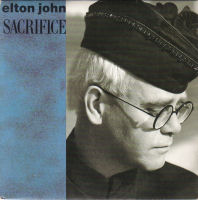
"Sacrifice" is a song by English musician Elton John, written by John and Bernie Taupin, from John's 22nd studio album, Sleeping with the Past (1989). It was first released in October 1989 as the second single from the album. It achieved success in 1990, particularly in France and the United Kingdom, becoming John's first solo chart-topper in both nations. The song describes how hard it is to stay faithful and devoted in a marriage, challenging the mantra that a successful union requires sacrifice. Due to the song's success, John has played this song in various locations in the years since it was released.

"G.H.E.T.T.O.U.T." is a song by American R&B duo Changing Faces. Released in 1997 from their second album, All Day, All Night (1997), and produced by R. Kelly, the single reached number eight on the US Billboard Hot 100 and spent four weeks at number one on the Billboard R&B chart. The song also became a top-10 hit in the United Kingdom and reached number 22 in New Zealand.
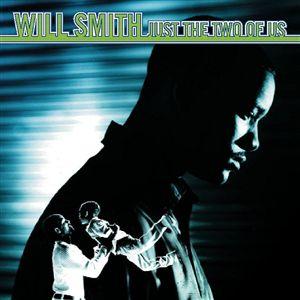
"Just the Two of Us" is a song by American rapper Will Smith. It was released as the fourth single from his debut solo studio album, Big Willie Style (1997), on July 20, 1998. The song was inspired by Bill Withers' and Grover Washington, Jr.'s love song of the same title; Smith's version samples and incorporates lyrics from the original. Instead of love between a couple, this version focuses on the relationship between a father and son. The song features Fuzzy and Sauce from the R&B group Somethin' for the People with Fuzzy providing the chorus and ad-libs, while Sauce is a credited as a producer on the track.

"The Promise of a New Day" is the opening track and second single from American artist Paula Abdul's second studio album, Spellbound (1991). The song was written by Paula Abdul, Peter Lord and V. Jeffrey Smith. It became Abdul's sixth and final number-one hit on the US Billboard Hot 100.

"Pandora's Box" is a song by English electronic band Orchestral Manoeuvres in the Dark (OMD), released as the second single from their eighth studio album, Sugar Tax, on 24 June 1991. The song, which deals with the less glamorous side of celebrity, was inspired by silent film actress Louise Brooks and is named after the 1929 film Pandora's Box in which she starred.
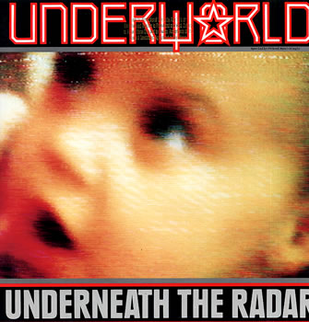
"Underneath the Radar" is a song by English electronic music group Underworld, released from their debut album, Underneath the Radar (1988), in 1988. It was featured prominently in the fifth-season premiere of Miami Vice, during the opening aerial shots of Miami and subsequent nightclub shootout. The Morse code in the first 30 seconds of the song reads "Think global, act local". Commercially, the song reached number two in South Africa, number five in Australia, number 14 in New Zealand, number 69 in Canada, and number 74 in the United States.

"Tattva" is a song by British psychedelic rock band Kula Shaker, released as the band's debut single. It was first released in the United Kingdom in 1996 as "Tattva ", then re-issued on 24 June 1996 as a re-recording from their debut album, K (1996), with a different sleeve and track listing. The re-recording reached number four on the UK Singles Chart, number 11 on the Canadian RPM Alternative 30 chart, and number 10 on the US Billboard Modern Rock Tracks chart. In Melody Maker, critic Neil Kulkarni declared "Tattva" and follow-up release "Grateful When You're Dead" to be "the two worst singles of '96".
"Hard to Handle" is a 1968 song written by American soul singer Otis Redding along with Al Bell and Allen Jones. Originally recorded by Redding, it was released in 1968 as the B-side to "Amen". The song also appears on the 1968 album The Immortal Otis Redding. Redding's version reached number 38 on the Billboard R&B chart and number 51 on the pop chart.
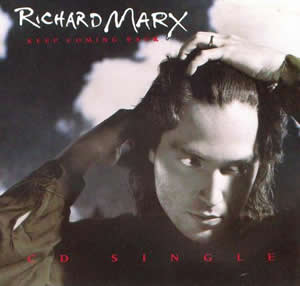
"Keep Coming Back" is a song by American singer-songwriter Richard Marx. It appears on his third solo album, Rush Street, and was both written and produced by Marx. The lyrics to the song detail a man's unrequited love for a woman. Working with musicians such as Luther Vandross and keyboardist Greg Phillinganes, Marx sought to explore different musical territory with this single, stating that "I wanted to write an old-fashioned R&B song."

"Live and Learn" is a song by American new jack swing group Joe Public, released in March 1992 as the second single from their self-titled debut album. It was a success, peaking at number four on the US Billboard Hot 100, number three in the Netherlands and New Zealand, and number 10 in Belgium. It was ranked number 16 on Complex magazine's list of the "25 Best New Jack Swing Songs of All Time".

"Auberge" is a song by British singer-songwriter Chris Rea, which was released in February 1991 as the lead single from his eleventh studio album, Auberge. It was written by Rea and produced by Jon Kelly. "Auberge" reached No. 16 in the United Kingdom and remained on the UK Singles Chart for six weeks. A music video was filmed to promote the single. It was directed by Nigel Dick and shot at Bray Studios, Berkshire.


















